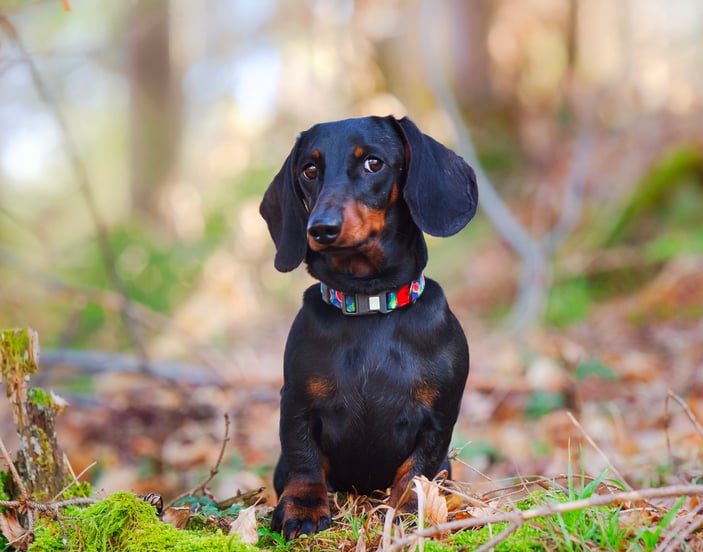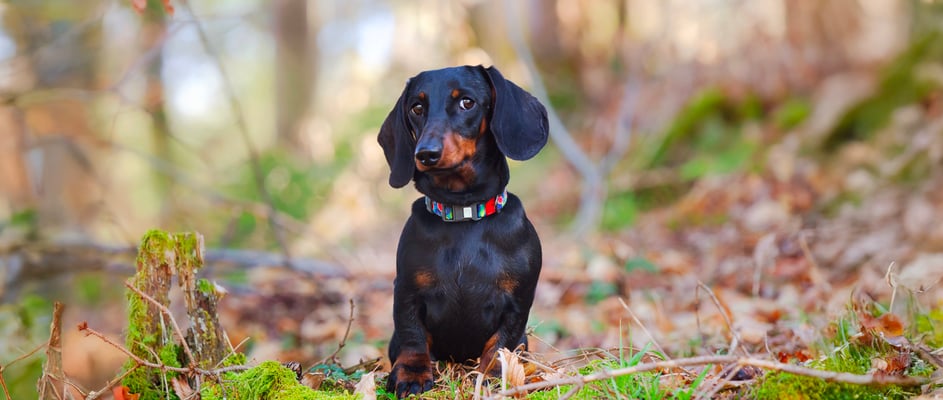The guide to owning a Miniature Dachshund.
Want to know everything there is to know about training your Miniature Dachshund puppy? Submit your email below, and we’ll send you a one-stop guide on all things puppy training!
Jump to:
Stats at a glance.
A history of Miniature Dachshunds.
Like their bigger cousins, Miniature Dachshunds come from Germany. The original breed was developed centuries ago as a “badger dog,” or Dachs-hund, adept at going below ground (also called “go to ground”) to flush out prey.
Over time, breeders selected short legs for easy tunnel manoeuvres. Eventually, smaller lines were developed for hunting rabbits or smaller quarries.
Compared to the standard version, the miniature variety was beloved by owners who needed a tinier, more manageable dog around the house.
Although they’re small, these scent hounds never lost their hunting drive. Even modern minis love to sniff around the garden for anything interesting.
They might try to chase a squirrel if given half a chance!
Want to see how this hound breed compares to other unique canines?
Check out our post on the top ten rarest dog breeds to explore what sets Mini Dachshunds, and other extraordinary pups, apart.
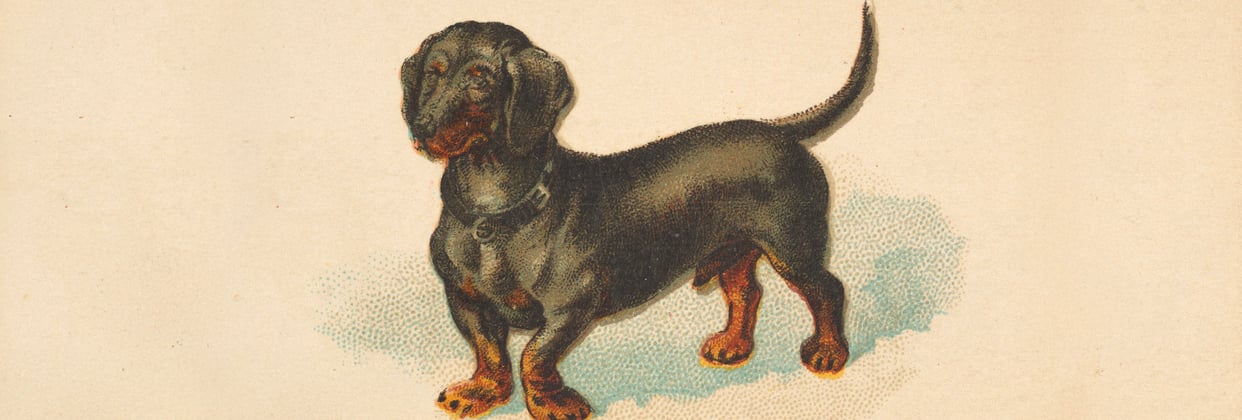

How much is a Miniature Dachshund puppy (UK)?
Curious about costs? A Miniature Dachshund puppy typically runs between £600 and £3,500 in the UK, depending on factors like pedigree, colouring, and the breeder’s reputation.
If you spot an unusually low price, it might be a red flag. Good practice includes verifying vaccination history, health checks for back problems, and meeting at least one parent on-site. Responsible dog ownership starts here.
If you’re new to the game, have a peek at our article on buying a dog (including advice and tips). This guide can help you spot reliable breeders who provide the proper documentation and an enthusiasm for answering any questions you may have.
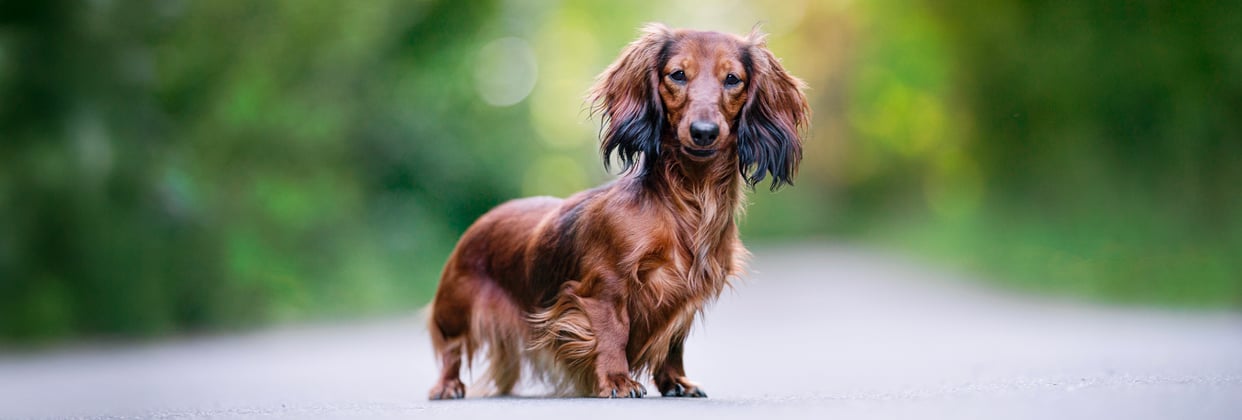

Here’s what to look for when selecting a new dog:
A caring environment that fosters well-socialised pups.
Clear breed standard details on coat type (e.g., miniature smooth-haired, wirehaired, or long-haired).
Comprehensive health certificates—especially for disc disease and lafora, as Dachshunds are prone to certain inherited conditions.
A willingness to let you meet both parents.
For more general puppy tips, check out our new puppy owner's guide. It’s a good starting point if you’ve never had a dog in the house before.
Colours and coat types.
Much like standard Dachshunds, miniature varieties come in a range of colours and patterns. You’ll see smooth-haired, wirehaired, and long-haired versions.
Common colours include black and tan, red, chocolate, and even dapple. Every individual dog has distinct charms, and each coat type demands slightly different grooming:
1. Miniature smooth-haired Dachshund
Sleek coat, easy to groom, short and shiny.
Wipe down gently once or twice a week to remove loose hairs.
Ideal for those who want minimal fuss.
2. Wirehaired
Bristles with a rough texture and adorable “beard” around the muzzle.
Needs stripping or clipping periodically—especially helpful if you’d like to keep your pup tidy.
3. Long haired
Flowing fur that calls for regular brushing.
Beautiful plumes on legs and tail.
Perfect for owners who enjoy a more “furry” look.
Curious about other gorgeous coat colours in dogs? Peek at our grey dog breeds article for more variety across the canine world.





Size and weight: Mini versus standard.
What’s the difference between a Miniature Dachshund and a standard? Let’s compare vital stats:
Standard Dachshunds:
Height: 20–27 cm at the shoulder
Weight: 9–14.5 kg
Miniature Dachshunds:
Height: 13–18 cm at the shoulder
Weight: 4.5–5 kg
As you can see, minis truly are a scaled-down version. They can be perfect for a home environment where space is limited. However, smaller size doesn’t mean less personality.
You’ll still have the typical Dachshund charm, cleverness, and occasional stubborn streak, just compacted into tinier proportions.
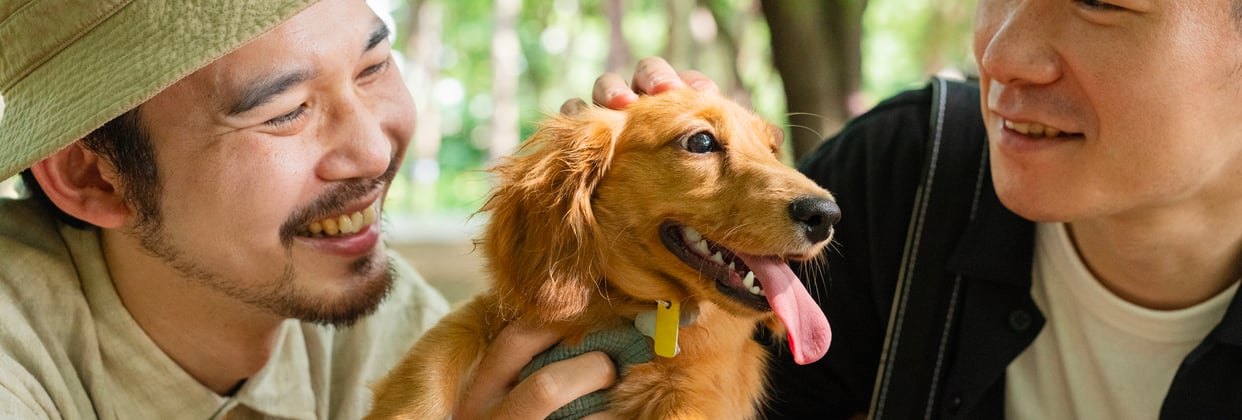

Temperament and behaviour.
Temperament
Dachshunds are known for their fiery spirit, regardless of size. A miniature stands just as tall in personality as a standard.
Minis can be affectionate, playful, and protective of their patch, Mini Dachshund pups often fancy themselves mighty watchdogs.
Don’t be surprised if they bark at the postman, letting everyone in your building know a “threat” is near.
Despite their fearless nature, these family pets relish a good snuggle on the sofa. They form strong bonds with their humans and sometimes decide there’s only space on your lap for them!
For more on how to keep your dog engaged and happy, read our blog post and discover all sorts of imaginative play ideas.
Do Miniature Dachshunds make good pets?
Absolutely! They tend to be excellent companions for singles, retirees, or families.
Miniature Dachshund pups can adapt well to flats or houses, as long as they get daily walks and mental stimulation.
However, be sure to monitor interactions with small children. They are good with children, however these pups have long backs, making them more prone to injury if handled roughly.
Teach kids to support the chest and hindquarters whenever picking them up.
Are you wondering if minis rank among the best for households? Visit our best family dogs UK post to see how they compare to other friendly pups like the Labrador Retriever.
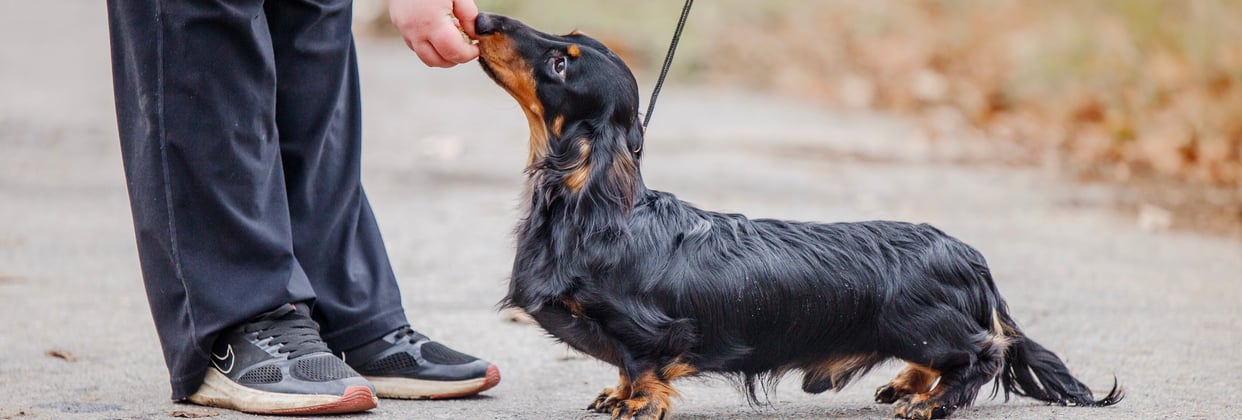

Are minis good with other dogs?
It depends on early socialisation. Some minis happily coexist with bigger dogs after patient introductions.
Others get a bit protective or “nippy,” especially if they feel startled. The key is to socialise them as soon as you get them, usually from 8 weeks old, letting them meet calm canines in controlled settings.
Gradually, they learn good dog manners and can even become best pals with bigger breeds.
Barking, separation anxiety, and more
Dachshunds typically have a robust bark. That loud voice once helped hunters locate them underground. Today, it might alarm your neighbours. Early training can tame excessive barking.
Also note that these snugglers dislike lengthy solitude. If you work long hours, consider a dog walker, a helpful family member, or doggy daycare.
For separation-related tips, check our guide on separation anxiety.
Training a Miniature Dachshund.
Are Mini Dachshunds smart?
Yes! They’re bright and resourceful, but that same intelligence can mean a dash of stubbornness.
Perseverance is key. Use positive reinforcement—small treats or cheerful praise—and keep sessions brief.
If your mini acts up or becomes unfriendly, stay patient.
Harsh corrections often backfire, as these little dogs love happy interactions.
Toilet training
Consistency is crucial, and so is establishing a routine. Some mini Dachshunds master house training quickly, while others take a little longer.
Placing them in a crate at night and directing them to the right spot first thing in the morning helps them learn boundaries.
If you’re struggling, read our piece on puppy toilet training for a step-by-step approach to success.
Socialisation and off-lead challenges
Because Dachshunds are prone to chase scents (they’re scent hounds, after all), letting them off-lead outside can be risky.
Pup might catch a whiff of something interesting and take off. If you’re determined to do off-lead activities, invest time in training recall early.
Or stick to enclosed gardens and dog parks where they can’t disappear after a squirrel.
Shedding and grooming.
Smooth, wire, or long-haired?
Miniature smooth-haired Dachshund: Minimal shedding, quick weekly brushing.
Wirehaired: Slightly higher upkeep due to stripping or clipping.
Long-haired: More frequent brushing, at least several times per week, to prevent tangles in that gorgeous coat.
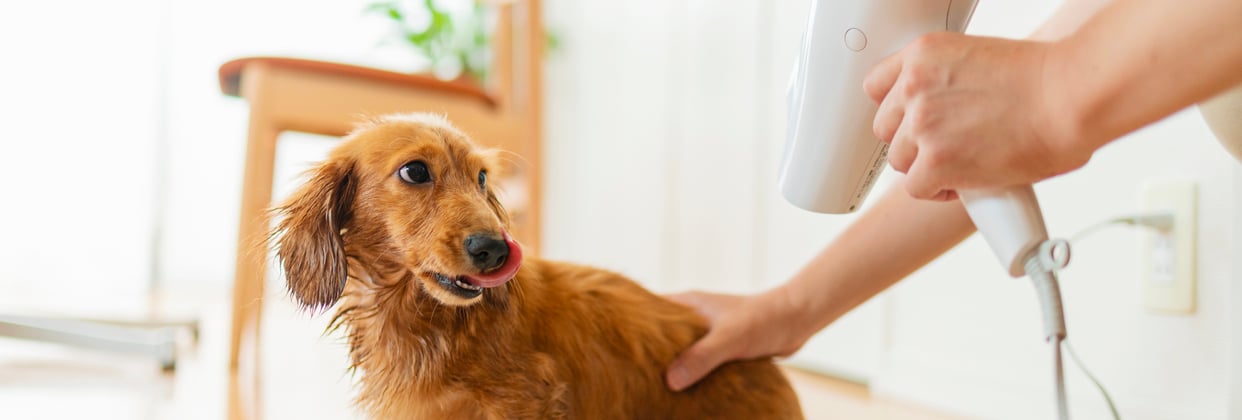

Use a gentle dog shampoo to avoid drying out sensitive skin. Bathing every few months or as needed is usually fine.
For more tips, check our how to bathe a dog tutorial, which offers step-by-step advice to keep bath time stress-free.
Exercise and mental stimulation.
What does a Miniature Dachshund need?
Because they have short legs, your mini Dachshund doesn’t need much in the way of marathon workouts.
Still, 20–30 minutes of daily moderate exercise helps preserve muscle tone and prevents obesity.
A gentle trot around the block or an off-lead roam in a safely fenced area can do wonders.
Keep an eye on them on stairs, as repeated bounding can exacerbate joint problems.
Activities they love:
1. Sniffing games: Hide small treats in cardboard boxes for them to discover.
2. Interactive toys: Puzzle feeders keep them mentally busy.
3. Light fetch: Some Mini Dachshunds adore retrieving small toys indoors or out.
Worried about how to keep your Mini Dachshund’s mind active? Peek at our article on making your dog happy with ideas for creative stimulation.
A bored Dachshund might dig or become destructive—that keen sense of smell needs a healthy outlet!
Feeding and nutrition.
How much should a Mini Dachshund eat?
Compared to standard Dachshunds, minis typically eat 1/2–1 cup daily, split into two meals.
Quality kibble helps maintain muscle, along with lean treats in moderation. Overfeeding can quickly lead to obesity, which raises the risk of disc disease (IVDD) and back problems.
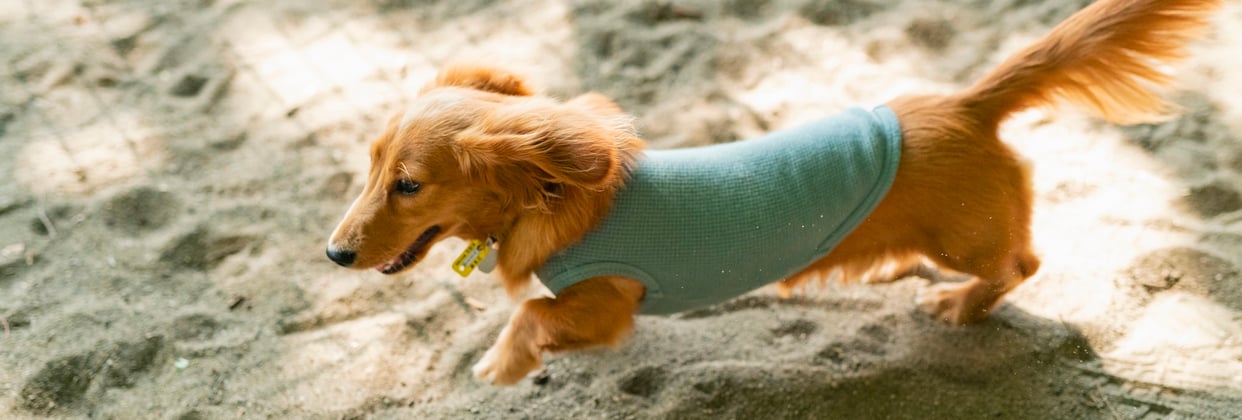

Sample feeding schedule:
Morning meal: 1/3–1/2 cup of quality dog food
Evening meal: 1/3–1/2 cup of the same brand or formula
Adjust according to your pup’s energy level and vet recommendations.
Common health issues in Miniature Dachshunds.
Though small, Mini Dachshunds can face several breed-specific challenges within the breed:
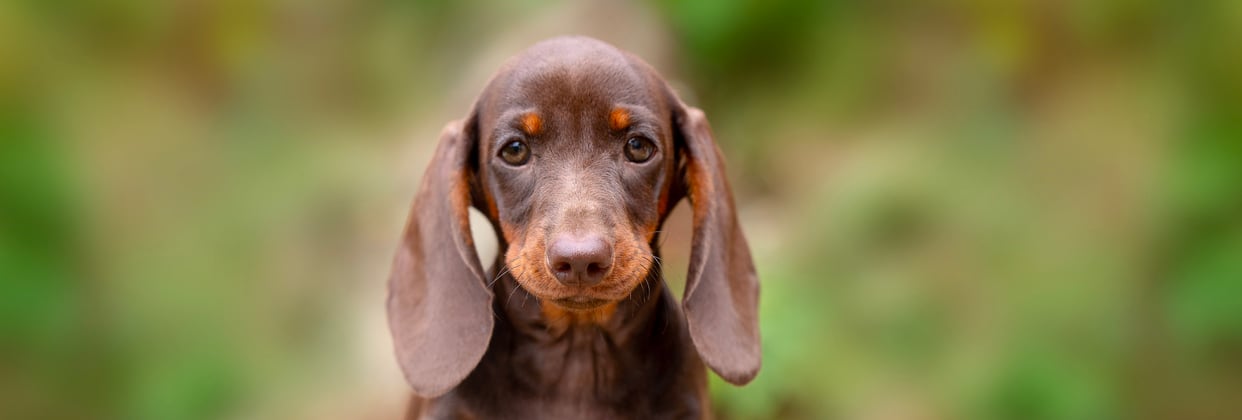

Pet insurance for Miniature Dachshunds.
Given that Dachshunds are prone to back problems, disc disease, and other issues, reliable insurance is a lifesaver.
Treatment for IVDD alone can reach thousands of pounds. Consider coverage that includes ongoing illnesses and chronic conditions.
At Waggel, we offer plans that cater to specific breed concerns and provide 24/7 vet triage via Joii. You can get a free quote for peace of mind.
Wondering if insurance is really worth it? Our “Do I Need Pet Insurance?" post might give you clarity. Vet bills pop up unexpectedly, so it’s wise to be prepared.
